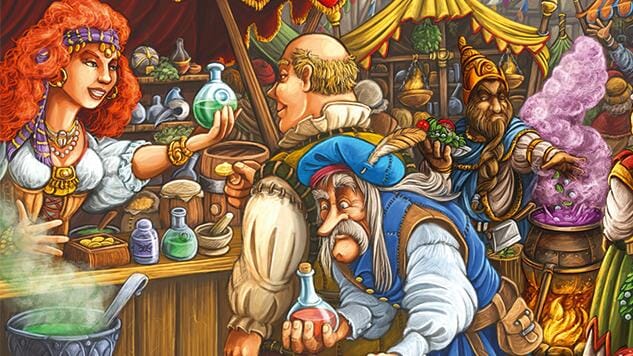The Quacks of Quedlinburg Is a Great Board Game with an Awkward Name

When the Kennerspiel des Jahres winner was announced last summer, I … laughed. I did, because the game that won, The Quacks of Quedlinburg, has a name that is both ridiculous and as unfriendly to a marketer as you could conceive without coining something truly offensive. And it really doesn’t have to be this way, as Quedlinburg, a town in Saxony with several sites on the UNESCO World Heritage List, has nothing whatsoever to do with the game—and the thing is, the game is very, very good.
Designed by Wolfgang Warsch, who also designed the Spiel des Jahres-nominated game The Mind (#5 on my top 10 games of 2018), The Quacks of Quedlinburg isn’t even a complex or long game, which is what the Kennerspiel is supposed to honor. It’s a clever twist on press-your-luck games that gives players a bit more control over their fates by allowing them to try to sway the odds more and more in their favor as the game progresses. Players do indeed pretend to be quacks of a sort, charlatans who are supposed to draw ingredients from their chests to concoct useless potions to sell to the gullible public and gain victory points, doing this nine times over the course of the game, each round buying more ingredients to craft bigger and more valuable potions in future rounds while trying to skew the odds more in their favor as the game progresses.
When you start The Quacks of Quedlinburg, which I’m just going to call The Quacks from this point because come on already, you have nine ingredient tokens in your bag, seven of which are white, one green, and one orange. All ingredient tokens have numbers on them from one to four, and when you draw a token from a bag, you place it on your board by counting that number of spaces forward from the last ingredient. White tokens are the dangerous ones: If the sum of all white tokens drawn and placed in that round on your board exceeds seven, your potion ‘explodes,’ and you will lose either your victory points or your money after the round.
All other ingredient colors are beneficial, and those can vary by game. You start with those two non-white tokens, and then after each round will use money you earned with your potion—the farther the potion extends on your ingredient track, the more coins you earn, although in each round it’s use it or lose it. Different colors bring different benefits; blue tokens might let you draw from your bag and choose whether to place a token or return everything to the bag and try again, while placing a yellow token lets you remove the previous one if it was white and return that to your bag. Black tokens give you rewards if your potion in that round has more black tokens than either or both of your neighbors’ potions. There’s a recommended first-game set of ingredient rules, but after that you can use specific sets or just choose randomly.
-

-

-

-

-

-

-

-

-

-

-

-

-

-

-

-

-

-

-

-

-

-

-

-

-

-

-

-

-

-

-

-

-

-

-

-

-

-

-

-









































